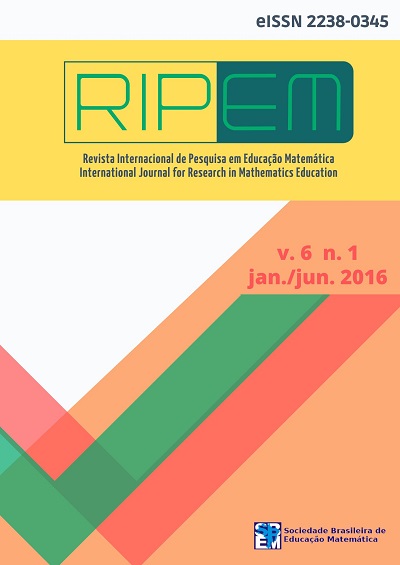An ethnomodel of a traditional Penobscot summer dwelling
Keywords:
Mathematics Education, Ethnomathematics, Ethnomodelling, Native American EducationAbstract
Shockey and Mitchell (2006) have engaged an ethnomathematical lens to describe the construction of a Penobscot hemispherical lodge. In that paper, the primary focus was on the etic view of the mathematics educators. Here, they consider the pedagogical implications, and have attempted to contribute to ethnomathematics literature by suggesting this was a Native North American perspective. In this article, Shockey and Mitchell revisit a summer dwelling through the emic view by utilizing units of analysis related to Bishop’s six cultural activities (1991). This work represents the authors’ first attempt with ethnomathematics, used to move from a strictly western etic perspective that emphasizes the universal assumptions that we call mathematics.
Downloads
References
Bishop, A. J. (1991). Mathematical enculturation. Dordrecht, The Netherlands: Kluwer Academic Publishers.
D'Ambrosio, U. (1985). Ethnomathematics and its place in the history and pedagogy of mathematics. For the Learning of Mathematics, 5(1), 44-48.
Dana, R. (1993). Multicultural assessment perspectives for professional psychology. Neeham Heights, MA: Allyn & Bacon.
Gilsdorf, T. E. (2012). Introduction to cultural mathematics: with case studies in the Otomies and Incas. Hoboken, NJ: John Wiley & Sons Inc.
Kluckhohn, C. (1949). Mirror for man. New York, NY: Whittlessy House, McGraw-Hill Book Company, Inc.
Pike, K. L. (1967). Language in relation to a unified theory of the structure of human behavior. The Hague, Paris, France: Mouton.
Rosa, M., & Orey, D. (2009). Symmetrical freedom quilts: the ethnomathematics of ways of communication, liberation, and arts. Revista Latinoamericana de Etnomatemática, 2(2), 10-16.
Rosa, M., & Orey, D. (2013a). Ethnomodelling as a methodology for ethnomathematics. In G. A. Stillman, K. Gabriele, W. Blum & J. P. Brown (Eds.), Teaching mathematical modelling: connecting to research and practice (pp. 77-88). Dordrecht, The Netherlands: Springer.
Rosa, M., & Orey, D. (2013b). Ethnomodelling as a research lens in ethnomathematics and modelling. In G. A. Stillman, G. Kaiser, W. Blum & J. P. Brown (Eds.), In teaching mathematical modelling: connecting to research and practice (pp. 117-130). Dordrecht, The Netherlands: Springer.
Schlauch, W. S. (1928). Mathematics as an interpretation of life. In J. R. Clark & W. D. Reeve (Eds.), Selected topics in the teaching of mathematics (pp. 24-34). New York, NY: Bureau of Publications Teachers College, Columbia University.
Shockey, T., & Mitchell, J. (2006). An ethnomathematics approach toward understanding a Penobscot hemispherical lodge. Horizontes, 24(1), 69-76.
Strathern, A. (1993). Landmarks: reflections on anthropology. Kent, OH: Kent State University Press.
Whorf, B. L. (1956a). An American Indian model of the universe. In J. B. Carroll (Ed.), Language, thought & reality: selected writings of Benjamin Lee Whorf (pp. 57-64). Cambridge, MA: MIT Press.
Whorf, B. L. (1956b). The relation of habitual thought and behavior to language, thought, and reality: selected writings of Benjamin Lee Whorf (pp. 134-159). Cambridge, MA: The M.I.T. Press.
Whorf, B. L. (1956c). Science and linguistics. In J. B. Carroll (Ed.), Language, thought & reality: selected writings of Benjamin Lee Whorf (pp. 207-219). Cambridge, MA: MIT Press.
Whorf, B. L. (1956d). Linguistics as an exact science. In J. B. Carroll (Ed.), Language, thought & reality: selected writings of Benjamin Lee Whorf (pp. 220-232). Cambridge, MA: MIT Press.
Whorf, B. L. (1956e). Languages and logic. In J. B. Carroll (Ed.), Language, thought & reality: selected writings of Benjamin Lee Whorf (pp. 233-245). Cambridge, MA: MIT Press.
Downloads
Published
Issue
Section
License

This work is licensed under a Creative Commons Attribution-NonCommercial-ShareAlike 4.0 International License.


